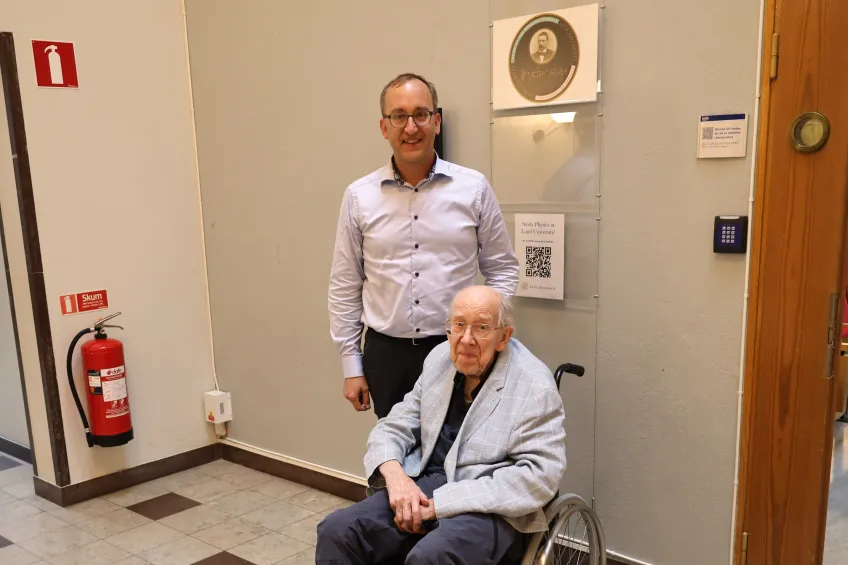When Lund University was founded in 1666, there was no faculty of natural sciences. Instead, physics was part of the faculty of philosophy, and for a long time teaching was carried out by professors of mathematics. It was not until the 19th century that physics in Lund moved into laboratories and began conducting experimental research.
The number of students grew rapidly, and in 1885 physics acquired its first dedicated building, having previously shared premises – the Library, the Royal Palace and the Historical Museum – with other disciplines. The building, now known as Classicum and home to the Pufendorf Institute, housed everything from instrument rooms to libraries.
Inauguration with royal splendour
The current premises on Sölvegatan were completed in 1950, but the inauguration had to wait. Sweden’s king, Gustaf V, was on his deathbed, and it was not until the spring of 1951 that his son, Gustav VI Adolf, as part of his coronation procession, cut the ribbon and declared the new Fysicum inaugurated.
Researchers' memories and stories
During the anniversary celebrations, researchers who have left their mark on the department shared their memories and personal stories.
“I studied physics here at Fysicum when the building was new in the 1950s,” says Hans Ryde, 95.
After several years as a researcher at other universities, he returned to Lund and the Department of Physics in 1975 to succeed Sten von Friesen as professor of nuclear physics. His son, Nils Ryde, is now a professor of astrophysics at the same department.
Several senior researchers had travelled to Lund to take part in the celebrations, including Hermann Grimmeiss and Lars Samuelsson – the first two professors of solid state physics.
“I had an exciting job at a research centre in Germany, but my boss thought I should look around. I was only supposed to be here in Lund for a couple of months. But my wife liked it so much that we decided to stay,” says Hermann Grimmeiss.
In 1965, he took up the newly established professorship in solid state physics in Lund. As a research leader, he helped lay the foundation for successful research in semiconductor materials. In 1988, Lars Samuelsson took over and further developed materials research. That same year, he founded the Nanometer Consortium – Scandinavia's first centre for nano research – which has now grown into NanoLund with over 300 researchers.
Professor Emeritus Marcus Aldén also shared his memories:
“I am not a native of Lund; I came to Lund as a student in 1980 and then stayed here at Fysicum,” he says.
As a research leader, he was involved in developing research in combustion physics. When the research focus grew significantly in the 1990s, new premises were needed, and in 2001 the Enoch Thulin Laboratory was completed – where researchers still conduct their experiments today.
A vibrant research environment
Since its inauguration in 1951, Fysicum has been the centre for the development of physics in Lund – from teaching generations of students to pioneering research that attracts researchers from all over the world.
And 75 years later, Fysicum is as vibrant as ever.






